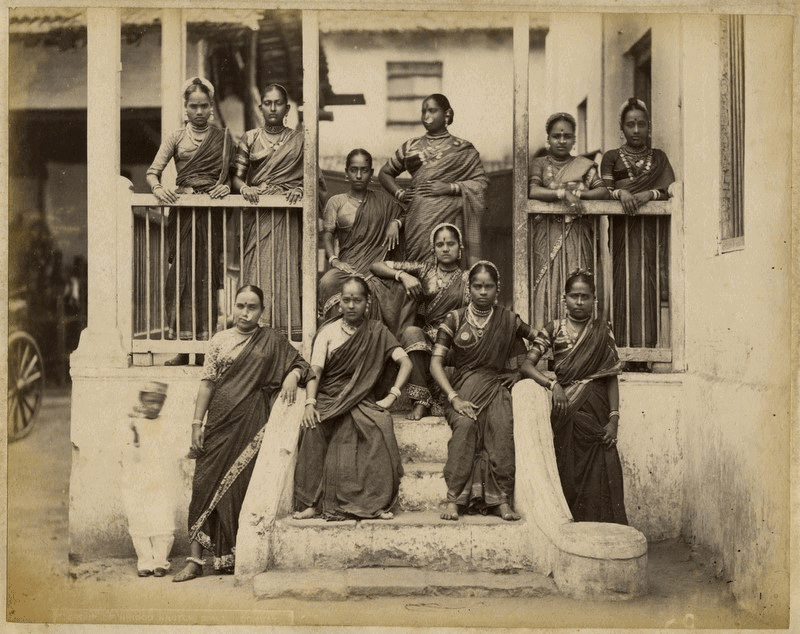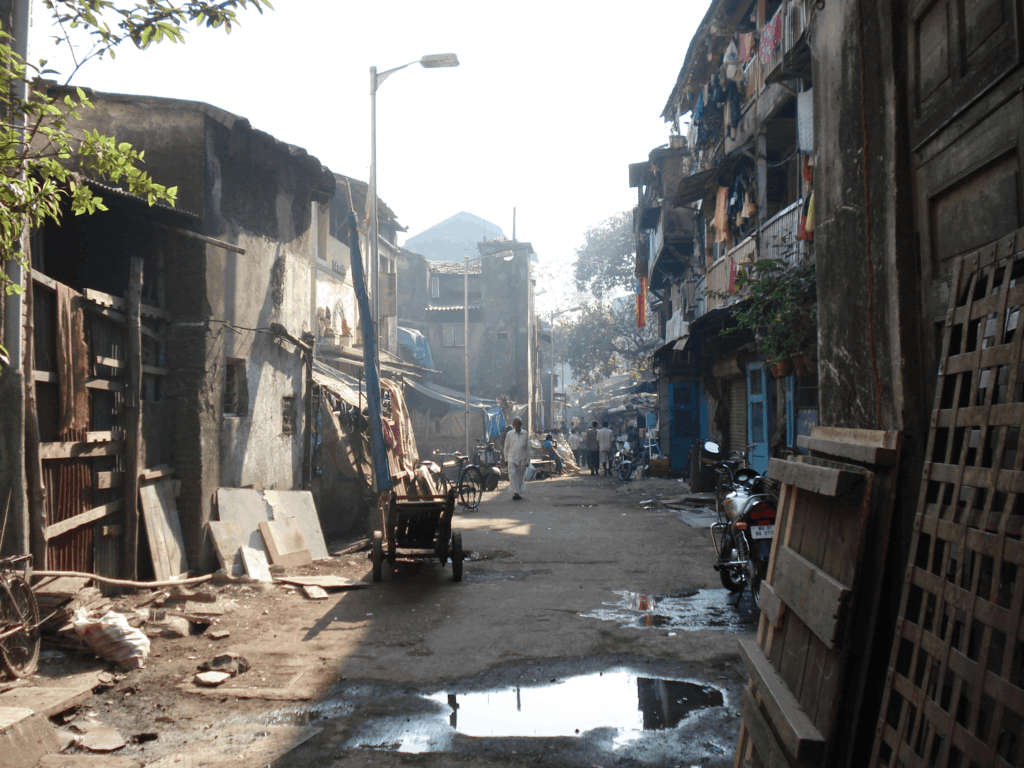The pandemic has deepened the difficulties and dangers faced by sex workers in gaining and maintaining clients. Lockdowns and lack of relief have wrecked any semblance of financial stability they previously had. Moreover, while sex work is not illegal in the country, police violence against women categorized as ‘prostitutes’ continues unabated.
Such public sentiments and aggressive policing are rooted in a long history of brutally criminalizing sex workers. In fact, it has resonance in various legal and medical regulations enacted during British rule of South Asia.
Historically, British authorities painted sex workers not only as purveyors of disease but as the root of immoral behaviour.
Ashwini Tambe’s 2009 book Codes of Misconduct uncovers the practical workings of and responses to legislation of sex work in nineteenth century Bombay. Tambe writes that Bombay was the first city in the subcontinent to make brothel keeping illegal.
In 1902, the Bombay Police Act (IV) enabled the police to order a premise believed to be a brothel to cease its business. The same Act was also one of the earliest to include anti-soliciting measures and gave powers to the Commissioner to evict individual sex workers from their homes.
The Bombay Police Act (IV) was, at its core, an administrative police reorganization document. It detailed what powers the island’s police force had. After a series of health-related legislation in the late 1800s that sought to surveil and segregate sex workers, the Bombay Police Act (IV) became the first to directly criminalize sex workers and other labouring women such as public performers (dancers, singers, etc) residing or working in the port city.
Read more: When public dining was introduced in Bombay…
The Cantonment Act
The first of the health laws enacted in England and its colonies was the Cantonment Act (1864) which sought to streamline prevention of venereal diseases among the Royal Army. This led to the Army arranging for sex workers and making them live inside the military’s residential limits. Prevention here largely meant targeting these women who were, ‘ideally’ for the British, engaging in sex only with European soldiers.
The Act, much like its successors, controlled public space on racial and gendered lines. The women had to regularly undergo invasive medical examinations and if found to be ailing from venereal disease, were detained and subjected to untested treatments in lock hospitals, those meant for the sole treatment of STDs,. Any woman refusing these mandates could be swiftly removed from the cantonment limits.
Historian Mridula Ramanna in her research on the Contagious Diseases Act (CDA) in Bombay claims that sex workers living “within city limits [had to] obtain permission from the Commissioner of the police” to continue their work.
The subsequent Indian CDA was passed in 1868 after The Royal Commission on the Sanitary State of the Army in India declared in 1864 sexual malpractice to be one of the biggest dangers to European soldiers. According to the Commission, a third of the Army dispatched to India suffered from venereal disease. In some outposts, 50% to 70% of the stationed army was diagnosed with venereal disease.
Set in this context of rising public health concerns, the Commission recommended the inspection of ‘disreputable’ houses. Makeshift lock hospitals, were built in places like Esplanade Hotel in Mazgaon where two Parsi doctors Rustomjee Nadirshaw and Burjorjee Framjee assisted W. F. Knapp in carrying out health examinations of women. This forced sex workers to register themselves to authorities and obtain permission for their work and movement. A police officer could hypothetically detain a woman on the suspicion that she is an unregistered sex worker.
Tambe’s book sifts through official archival material including police files that document how the police followed highly unethical methods of ‘catching’ sex workers in what were considered licentious situations. Undercover operations often concluded in intercourse between an officer and the unwitting woman he had claimed to be a customer of. However, Tambe also shows how the police too formed a semi-regular clientele at brothels-and even owned shares of brothels which complicated their task of ‘cleansing’ the city.

European women as sex workers
In 1864, the British also passed the Foreigners’ Act under which non-British subjects could be deported from India if suspected of criminal activity. Tambe reveals in her book that once the Suez Canal was opened, Bombay saw the largest influx of European women who settled here as sex workers.
In 1912, 126 European ‘prostitutes’ were recorded in the city compared to a mere 2 in Madras and 6 in Karachi. The deportation law was sparsely used. Two women were deported to Russia and Poland in 1923 on charges of ‘prostitution’. However, the law became an easy way for local police to threaten women into subservience. Judicial proceedings show how Mary Fooks, a Russian woman working in a brothel on Falkland Road which was partly owned by Police Inspector S. Favel, a member of the Criminal Investigation Department, was prevented from leaving the brothel and consequently sex work by Favel. The Inspector threatened her with deportation when she and her English lover, D Meyer, sought to escape the area together.
Mriduala Ramanna’s research makes it clear that the implementation of the Contagious Diseases Acts led to native women escaping to districts like Thane- then not part of the city and thus outside of the CDA’s legal framework. Only 1,600 women registered themselves through the CDA. This stands starkly short of the real estimates, given that the 1864 Census itself had listed 1,044 sex workers residing in Girgaon alone. The island’s total population of sex workers in 1864, despite its underestimation due to difficulties associated with census taking, was 9,536. This meant that a mere 6% of women placed themselves in the ambit of the new anti-sex worker legislation.
Response to the acts from sections of the native populace was divided. While a few believed it to be too dishonouring to put native women through highly ‘immodest’ medical examinations, some thought the government was benefiting ‘immoral women’ at the expense of honest subjects. There were also those who campaigned vociferously for the removal of sex workers entirely from their neighbourhoods, claiming that the municipality wasn’t doing enough to ‘rid’ the city of indecency.
In 1864, of the 9536 people listed as sex workers, 58 identified as Brahmin, 1 as Lingayat, 6026 as Hindu Other Castes, 77 as Hindu ‘Out-caste’, 3245 as Muslim, 44 as Parsi, and 36 as Christian. Around 50 identified as racially either European or Indo-European while the rest as Native. In 1872 after a relatively haphazard implementation of the Acts, 0 Parsi women, 39 Brahmin women, less than a thousand Hindu Other Castes, less than 500 Muslim and only 11 Christian women identified as sex workers. This significant drop cannot solely be attributed to displacement.
Tambe notes that in 1926, there was native outrage over the inclusion of ‘singing and dancing girls’ in Bombay’s theatres and drama houses. She writes that “Jam-e-Jamshed, the leading daily of the Parsi community, received several letters against [this] and called on the police commissioner and Censor Board for a ban”. Thus, a reluctance to openly admit to practicing sex work was a manifestation of the fear women (Parsi and others) held regarding their already precarious position in the port city.

Interestingly, sailors who had a brief yet regular migratory relationship with the island were some of the most frequent ‘super-spreaders’ of venereal disease. British soldiers and administrators, a majority of the European male population in Bombay, formed a significant portion of women’s clientele. Even so, much like there is little to no scrutiny of the actions of men today, there was no restrictive investigation of them undertaken back then. The policing being carried out in the name of healthcare saw as its object only the vilified figure of the sex worker.
When the administration opined that these acts hadn’t fulfilled their purpose, Bombay Police Act of 1902 was put into motion. This Act allowed the police to arrest a woman without a warrant if he believed her to be soliciting for sex. Tambe notes that although the police lacked the zeal for serious implementation- instead resorting to taking cuts of brothel-owners’ profits, “114 prostitutes were dealt with” in the first year of the Act.
According to Stephen Legg who wrote an article ‘Stimulation, Segregation, and Scandal’ about the geography of sex work regulation in British India, the Bombay Police Act ensured that
Anybody within, or within sight of, public space who by words, gestures or otherwise attracted attention for the purposes of prostitution, or solicited or molested a person for the purpose of prostitution, or wilfully and indecently exposed their person, could be punished with imprisonment for up to eight days, or a fine of up to Rs. 50.
This trajectory of brutalizing vulnerable sex workers has uninterruptedly continued into today’s India. It’s crucial to point out that more than four-fifths of the women who practiced sex work in Bombay successfully evaded these regulations which among other things sought to incarcerate them, a fact they were well aware of.
There are many workers, activists, collectives and organizations even today who are attempting to resist and rebel the same punitive and dehumanizing treatment that has been mete out to sex workers since the colonial era.